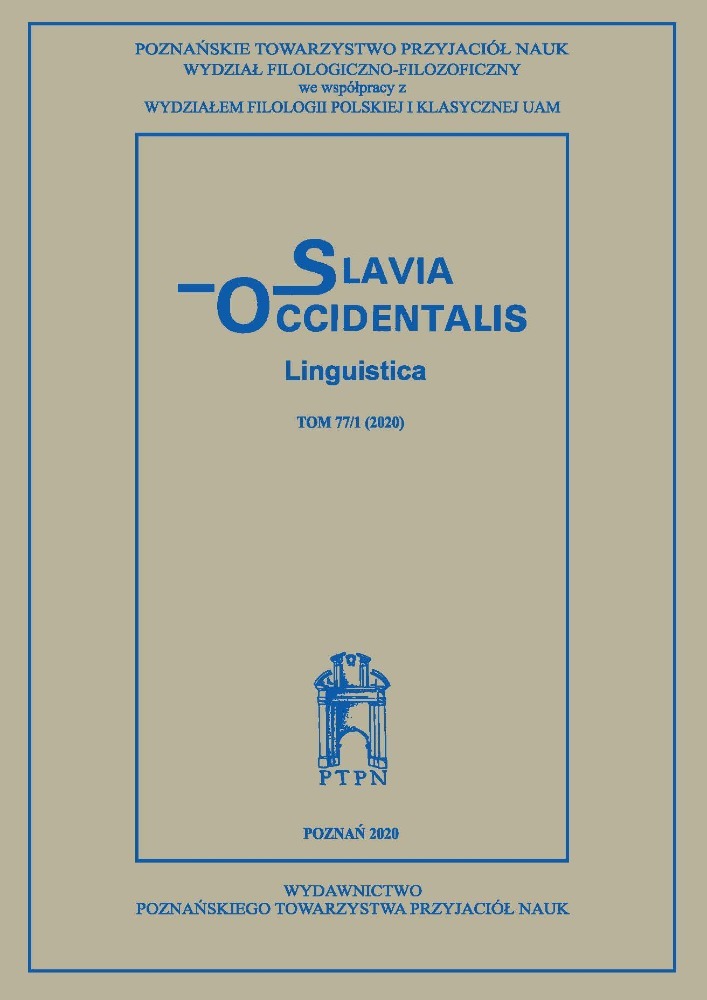Abstrakt
A manuscript stored in the Jagiellonian Library (no. 1564 from 1404) holds a fragment of a Polish calendar, previously unpublished, from the late 14th century or the early 15th century. Written on the last, extra parchment page, it is a fragment of a much larger manuscript. The first 13 days of January have survived (1 to 13 January) and 13 days of February (4 to 19 February). The fragment contains 17 names, five of which are not included in the Słownik staropolskich nazw osobowych (Dictionary of Old Polish Proper Nouns, W. Taszycki, ed., vol. 1-7, Wrocław 1965-1987), namely Arkadyj, Emilijan, Iginij, Sotera, Wedast. The word january (January, in Polish styczeń) has not been recognised by dictionaries, either. There is no equivalent of the calendar in question in Poland or other European countries. It is impossible to indicate the diocese or a milieu where it could have been used. The document includes a few names of saints properly attributed to the days of their cult and names attributed to days not used in other known calendars. This leads to a conclusion that the calendar was either used in an unknown milieu or we are dealing with a simple error of the copyist. The latter theory best explains the peculiarity of this fragment of the calendar. This is confirmed by marking 4 nd 5 February as Ide rather than Nones, and 12 and 13 February as calends rather than Ides. The calendar was probably erroneously planned by the copyist who confused the days and affiliation of saints. Perhaps these errors were spotted early, the copying process was never completed and the parchment was recycled. Most probably, the intention behind the calendar (1564) was a large parchment “poster”, reminiscent of a scroll, used to inform the congregation about the holidays in the year. The calendar is unique because of the names of saints included in it and the fact that it is written in Polish.
Bibliografia
Borejszo M., 1989/1990, Staropolskie nazwy miesięcy, „Slavia Occidentalis” 46/47, s. 19-32.
Włodarski B. (red.), 1957, Chronologia polska, Warszawa.
Encyklopedia katolicka, 1989, t. IV, red. R. Łukaszyk, L. Bieńkowski, F. Gryglewicz, Lublin.
Encyklopedia kościelna podług teologicznej encyklopedji Wetzera i Weltego z licznemi jej dopełnieniami, 1874, wyd. Michał Nowodworski, t. V, Warszawa.
Grotefend H., 1891-1898, Zeitrechnung des deutschen Mittelalters und der Neuzeit, t. 1-2, Hannover, HTML-Version, Ruth Horst: http://bilder.manuscripta-mediaevalia.de/gaeste/grotefend/grotefend.htm.
Katalog łacińskich rękopisów średniowiecznych Biblioteki Jagiellońskiej. Tom XI. Sygnatury 1501-1575, 2016, oprac. A. Kozłowska, L. Nowak, A. Sobańska, W. Świeboda, R. Tatarzyński, W. Zega, Kraków.
Lewicka-Kamińska A., 1977, Z dziejów średniowiecznej oprawy książkowej na Śląsku, „Roczniki Biblioteczne” XXI, s. 27-90.
Radoński K., 1947, Święci i błogosławieni kościoła katolickiego. Encyklopedia hagiograficzna, Warszawa–Poznań–Lublin.
Skierska I., 2003, Obowiązek mszalny w średniowiecznej Polsce, Warszawa.
Skierska I., 2008, Sabbatha sanctifices. Dzień święty w średniowiecznej Polsce, Warszawa.
Sstp – Słownik staropolski, red. S. Urbańczyk, t. 1-11, Warszawa–Kraków 1953-2002.
SSNO – Słownik staropolskich nazw osobowych, red. W. Taszycki, t. 1-7, Wrocław 1965-1987.
Wąsowicz H., 2013, Chronologia średniowieczna, Lublin.
Zathey J., 1949, O kilku przepadłych zabytkach rękopiśmiennych Biblioteki Narodowej w Warszawie, w: Studia z dziejów kultury polskiej, red. H. Barycz i J. Hulewicz, Warszawa, s. 73-96.

